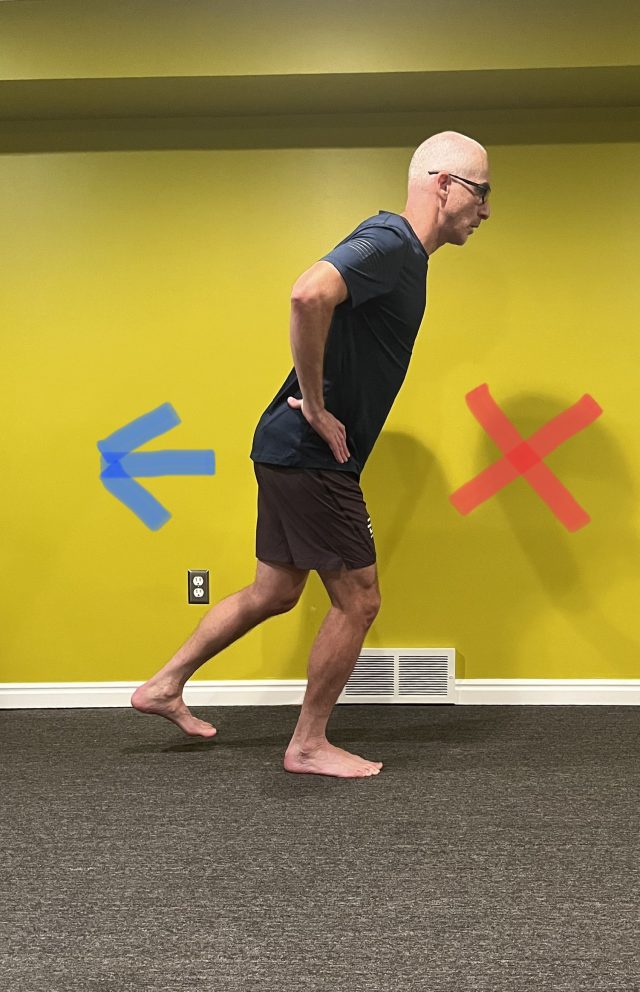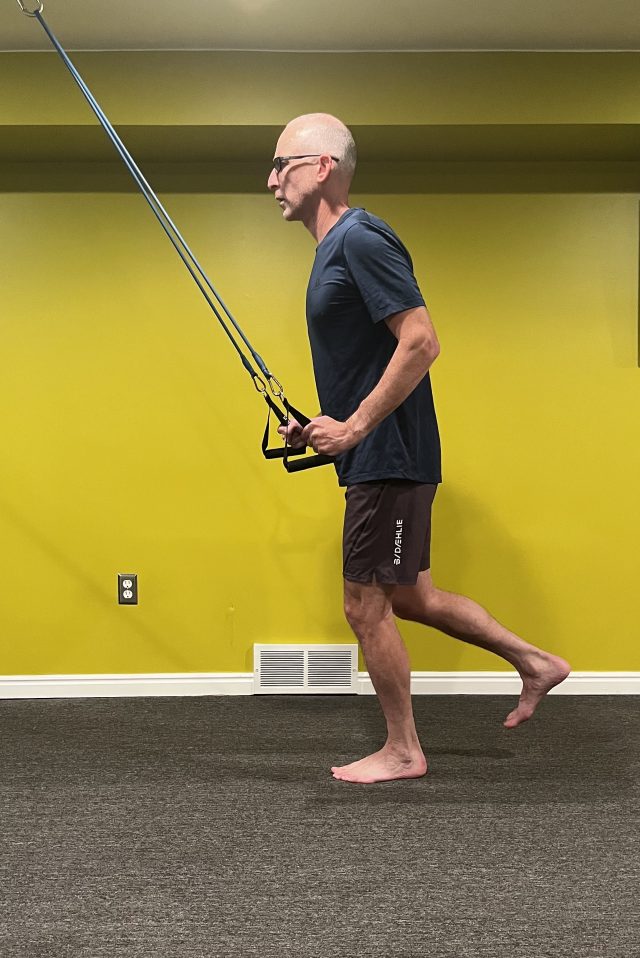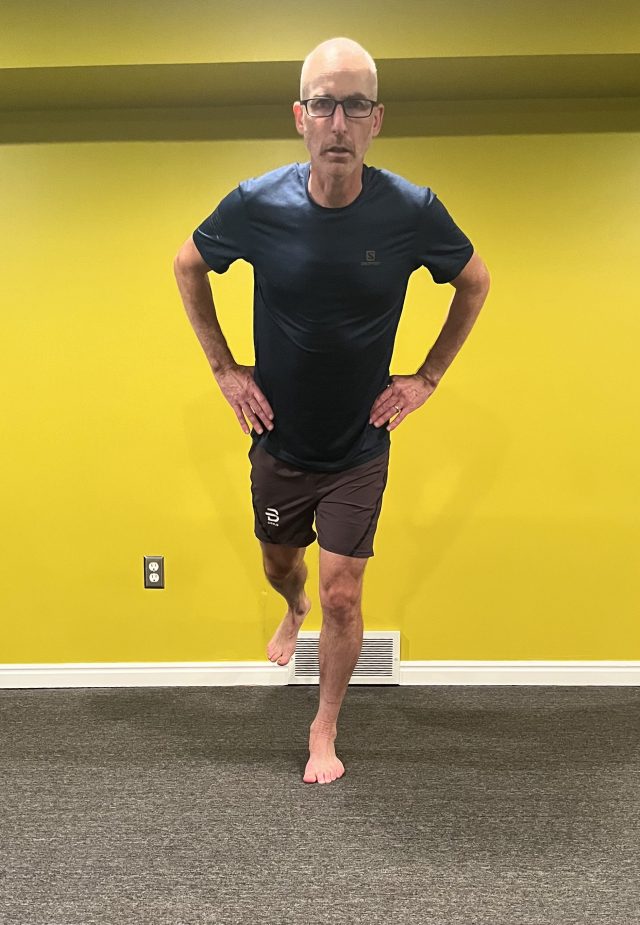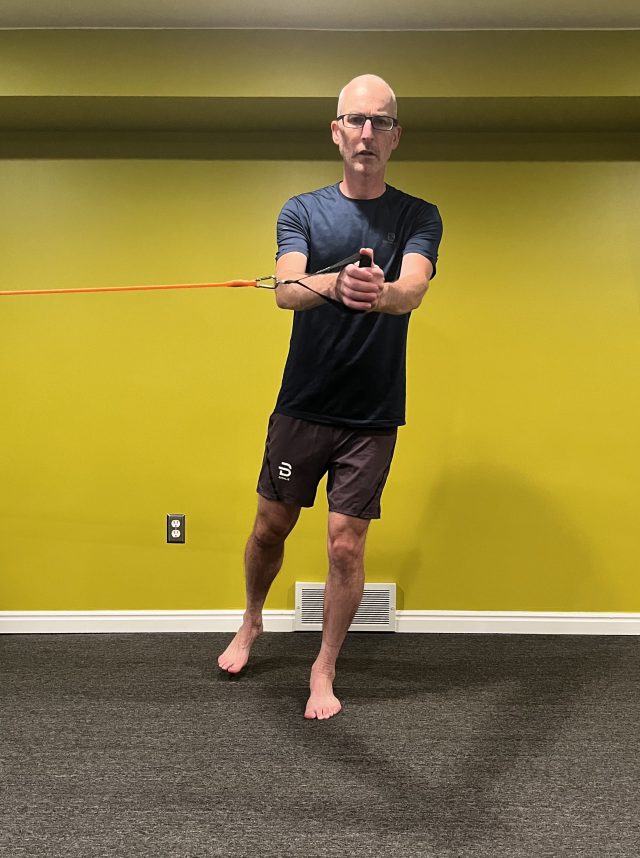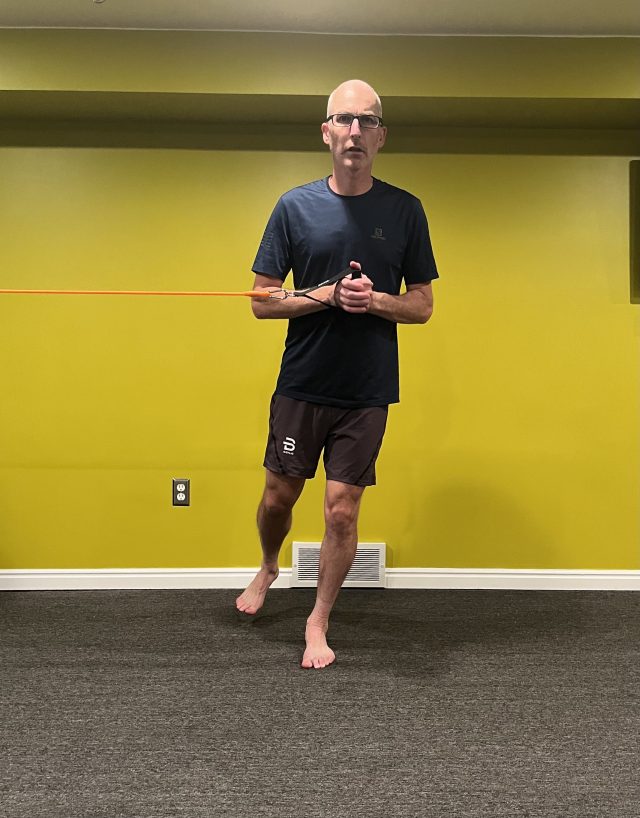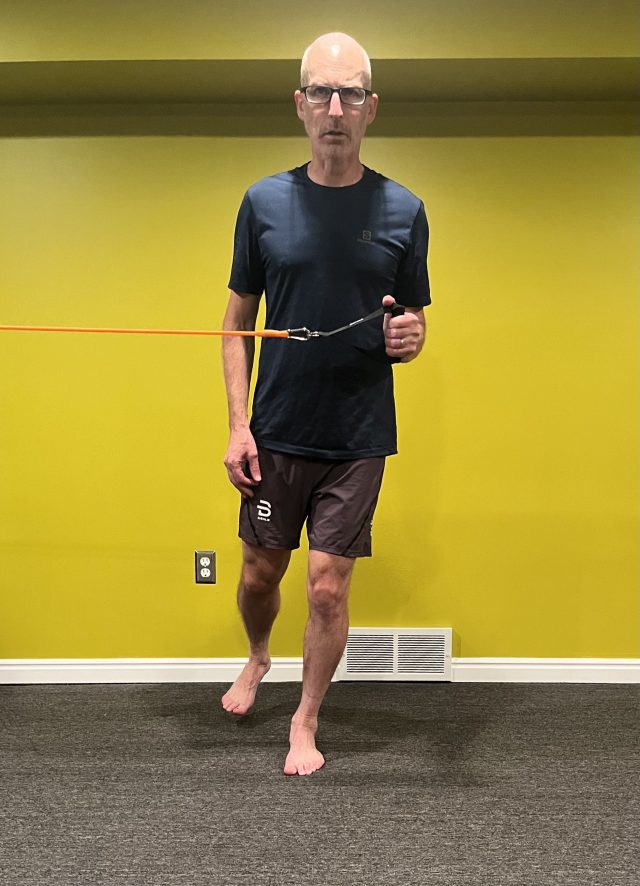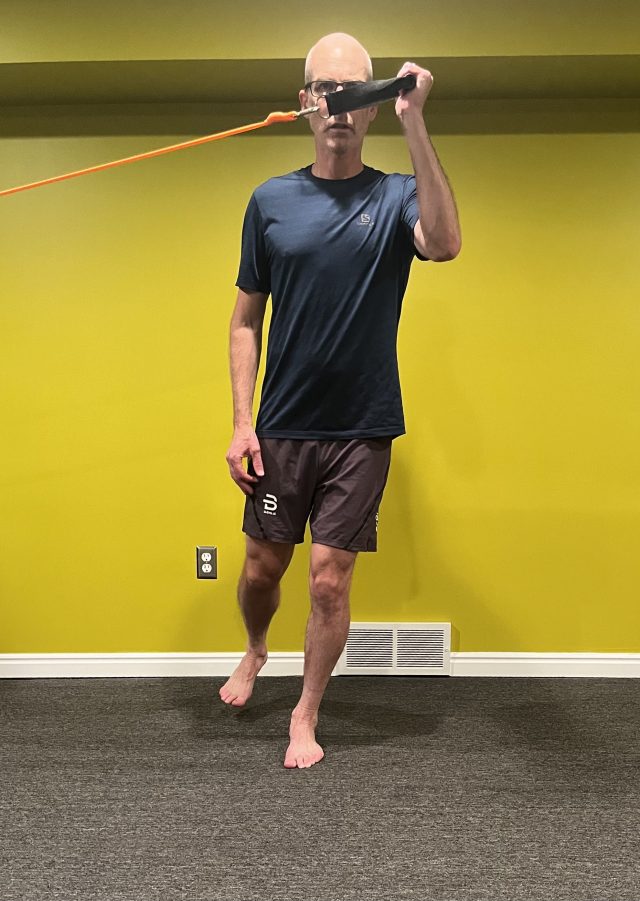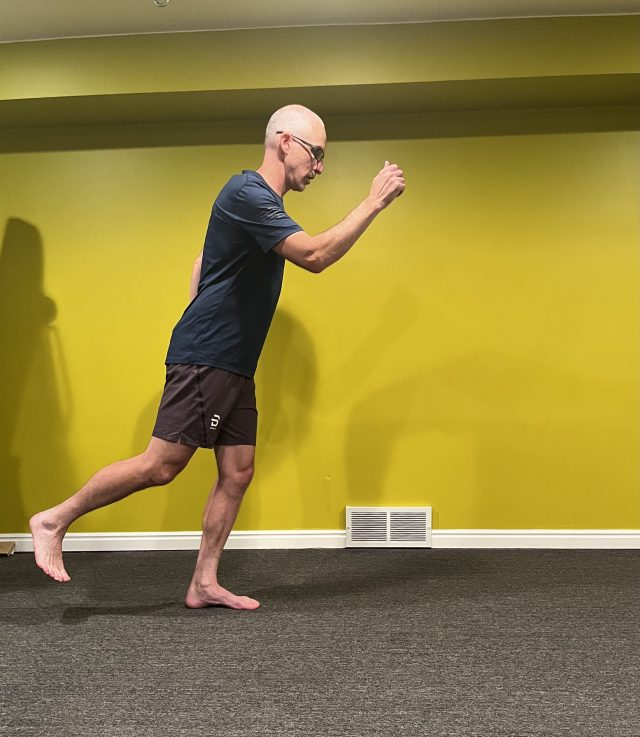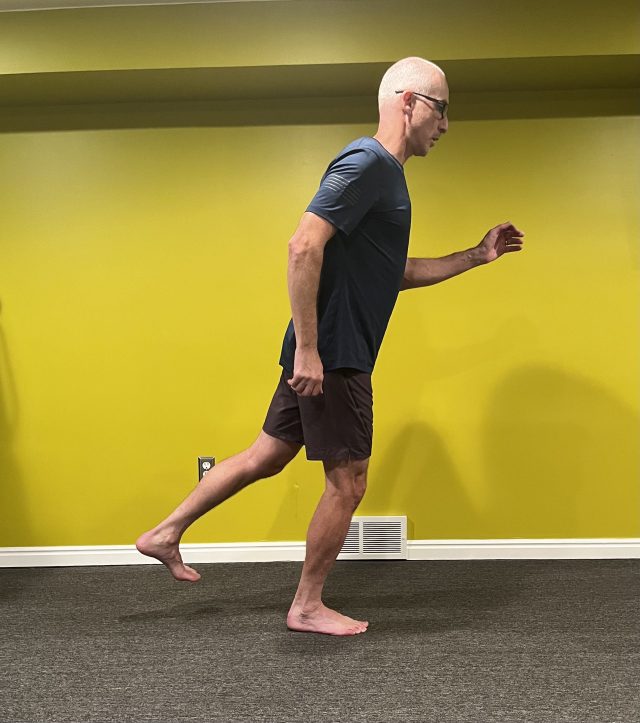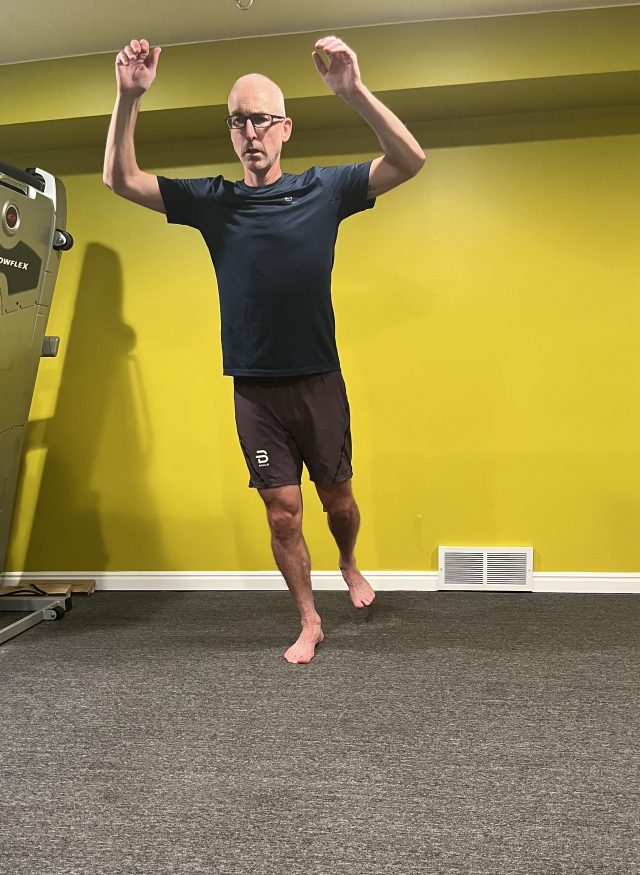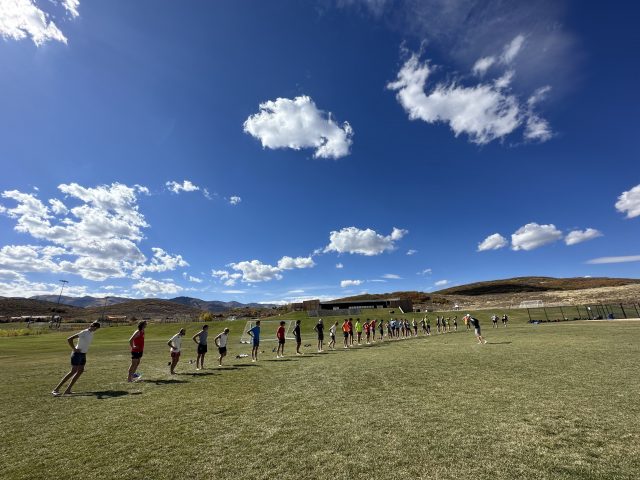
“Big motor, lousy suspension.” That’s how I often describe the endurance athletes I see in physical therapy. They have the physiology to go fast but are lacking the stability and/or coordination for efficient movement. Decreased efficiency equals increased load. And excessive load has led to injury and a visit to their friendly, neighborhood PT.
I used the same description while Greta Anderson, the US Cross Country Development Coach, and I stood trackside last August watching rollerskiers during the 15k Classic race in Trollhatten, Sweden. At that high level of racing, everyone was fast, but not everyone looked to have good stability, movement coordination, and efficiency. Our peanut gallery coaches’ box banter turned into a lengthy conversation on the fundamentals of Nordic skiing. Next thing I knew, Greta had me leading a training session for the National Training Group (NTG) and National Elite Group (NEG) combined camp in Park City, UT. We called it Stability From the Ground Up with the goal of reinforcing the Ski Stance while balancing on one leg and doing tricks. The following is an excerpt of that training session.
What is Ski Stance?
It is the foundation of Nordic skiing, both Skate and Classic. It is the stable, balanced position on the glide ski that facilitates both optimal glide and a stable platform as the glide ski becomes the kick ski. Stable glide begets more power, and more power begets more stable glide
Ski Stance Checklist:
- Balance on one leg.
- Equal pressure between the inside and outside of the foot, especially across the metatarsal heads between the ball of the foot on the big toe side and the pinky toe equivalent.
- Weight is biased towards the front of the foot but the heel stays down. Distribution is in the neighborhood of 70:30, forefoot to rearfoot.
- Toes are relaxed. This doesn’t mean the toes are hovering off the ground, but it very much means the toes are not clawing at the floor. (Have a look at the insoles of your ski boots: if there is a lot of wear under the toes, you are likely using them too much. This is either a bad habit or a compensatory strategy, or both. Speaking of insoles…)
- The ankle is flexed enough to put the kneecap in line vertically over the toes.
- Slight bend at the knee and hip.
- Forward lean at the trunk. This is accomplished with a hinge at the hips, not a flex through the spine. Nose-Knee-Toes is the old cue. If you’re dripping snot out of your nose, it should land on your foot not down the front of your shirt.
- High Hips. If I had a dollar for every time Devon Kershaw has endorsed a skier with “high hips” I could buy a ski quiver worthy of the World Cup. But what does this even mean? Our Checklist just listed flexion at the ankle, knee, and hip, so how can we keep the hips high but flexed at the same time? Forward Hips might be a little more intuitive. The pelvis is pushed forward without losing the bend at the hips. It will initially feel like you are falling forward, but that’s a good thing. We want the center of gravity shifted forward to push us down the trail. A different cue is Front seat, not Back Seat. The back seat is like starting to sit on the toilet: ankle, knee, and hip are flexed and the trunk is leaning forward; however, the butt is reaching backwards. Aim to shift the hips forward like someone is pulling at the front of your belt.
- Stability from the hip, not leaning to the side. When we stand on two feet, the center of gravity is between the two feet. If we are to stand on one foot, we can’t just pick up the opposite foot—our center of gravity has to shift to the stance side. That can be accomplished by leaning the trunk to the side, but this is not an active position and doesn’t facilitate generation of power. The weight shift ideally comes via a lateral movement of the pelvis over top of the stance leg. Note: this shift is very applicable to diagonal stride as we move from the kick ski to the glide ski. The direct application to skate varies a bit with the sub-discipline—V1 has a more distinct weight shift from ski to ski while the transition during V2 is more of a “swapping” of skis underneath the body than a lateral movement from one to the other.
Exercises
The intent of these exercises is to reinforce the Ski Stance. Each one has a movement component to challenge both balance and maintenance of the Ski Stance position. (Here is a primer on single limb balance and stability.) The quality of movement and balance are paramount. In order to be beneficial, the exercise should be challenging but doable. If you are falling all over the place or cannot control the movement, the exercise is likely too difficult for your current level. The exercises are listed in ascending order of difficulty.
Band Poling Exercise
- Ski Stance.
- Use a two-tailed band or two separate bands anchored at head height or higher.
- Pull down on bands keeping some bend in the elbows. (This is not meant to be a double poling simulation as we are trying to stay tall in the Ski Stance not dropping down as we would with DP or V2.)
Romanian Deadlift (RDL) Exercise
- Ski Stance.
- Bend forward aiming your fingers for the sides of your knee. The movement is a hinging motion at the hip. The joint angles at the ankle and knee should not change. The spine stays in neutral position without bending.
- Pelvis stays level as you bend forward (no twisting).
- Finish with a push forward of the hips/pelvis—front seat not back seat.
- You can add weight (single dumbbell or kettlebell in the opposite hand or one in each hand) for glute and hamstring strengthening, it doesn’t necessarily make the balance/stability any more difficult.
Hip Twist Exercise
- Ski Stance.
- Twist your upper body in the opposite direction of the stance leg (standing on right leg = rotation to the left).
- Shoulders, belly button, pelvis move together.
- Knee cap stays pointing straight ahead.
Paloff Press with Resistance Band Exercise
- Ski Stance.
- Band is anchored at chest height coming from the opposite side of the stance leg.
- Holding the band in both hands, push your arms straight out and back.
- Keep knuckles pointed straight ahead—don’t let the band twist you.
Shoulder External Rotation + Uppercut with Resistance Band Exercise
- Ski Stance.
- Band is anchored at chest height coming from the opposite side of the stance leg.
- Hold the band in the same hand as the stance leg with your elbow bent at 90 degrees and knuckles pointed straight ahead.
- Keeping the elbow bent at 90 degrees, raise your arm up as if you were a waiter carrying a tray.
- This is very good bonus work for your rotator cuff muscles.
Classic Stride/Bound with Pause for Balance Exercise
- Traditional diagonal stride bound except with a pause on the “glide” foot.
- Be honest about balancing in Ski Stance before kicking onto the other leg.
- Continue to focus on arm swing mechanics and a strong kick.
Skate Stride/Bound with Pause for Balance Exercise
- Traditional lateral bounding except with pause on the “glide” foot.
- Be honest about balancing in Ski Stance before kicking onto the other leg.
- Continue to focus on both the pre-load and strong push through the leg.
Ned Dowling
Ned lives in Salt Lake City, UT where his motto has become, “Came for the powder skiing, stayed for the Nordic.” He is a Physical Therapist at the University of Utah and a member of the US Ski Team medical pool. He can be contacted at ned.dowling@hsc.utah.edu.

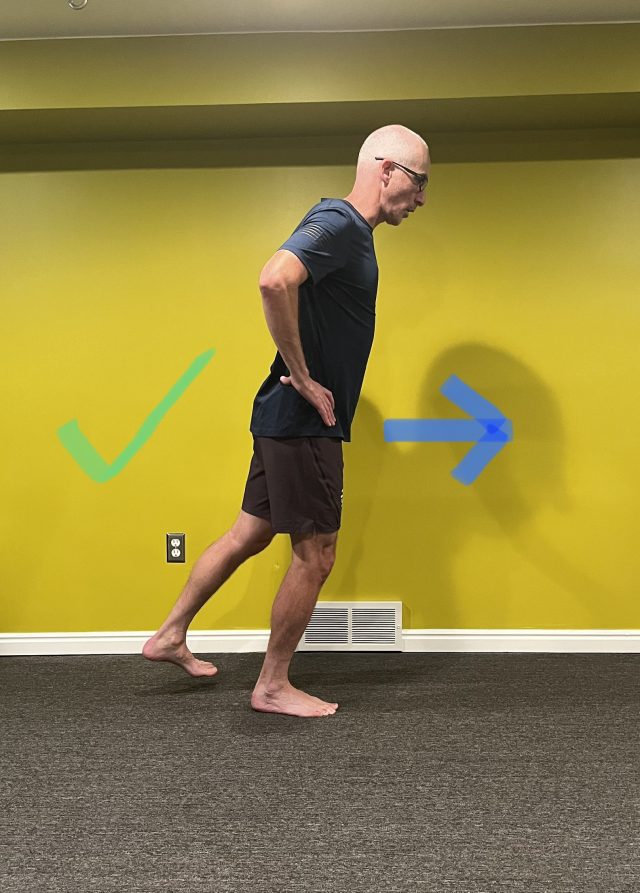 .
. 